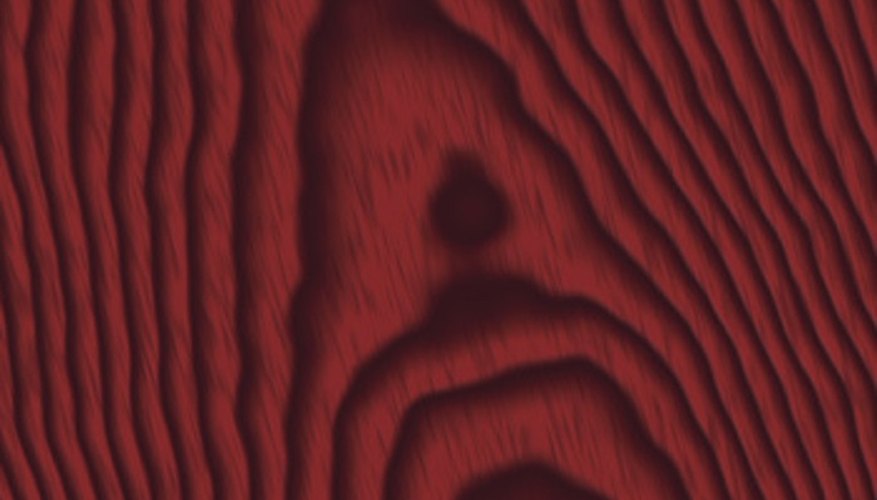When choosing paint colours for a room, it's important to consider several factors: the purpose for which the room is used, the quality of light which the room receives and the style in which the room will be decorated. Dark wood trim or furniture complicates this issue. Look carefully at the type and colour of the wood in question to determine its underlying tones and choose a paint shade that will harmonise with them.
Whites
Interior decorators use white so frequently for good reason: it's an incredibly versatile neutral. In rooms with a surfeit of dark wood, it can help to lighten and brighten interiors. For rooms with highly varnished wood detailing or furniture, a low-sheen white should be used, as high sheen paints compete unpleasantly with shiny wood. Pure whites create dramatic contrasts with dark wood, while duller, flatter shades allow wood to glow. If your dark wood has reddish or yellow undertones, choose a creamy white with a yellowish base. Maple can be complemented by pinkish whites, while walnut works better with bluish ivories.
- Interior decorators use white so frequently for good reason: it's an incredibly versatile neutral.
- For rooms with highly varnished wood detailing or furniture, a low-sheen white should be used, as high sheen paints compete unpleasantly with shiny wood.
Greys
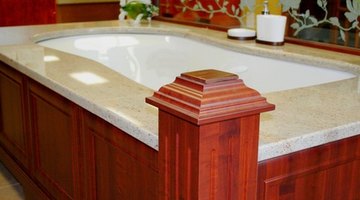
When combined with dark wood, grey paint makes rooms look calm and elegant. This unobtrusive colour blends well with dark wood, creating low-contrast, serene effects. Gray can enhance woods like cherry and maple, bringing out their burgundy tones. Bluish greys flatter mahogany by accentuating its depth, while greenish greys enhance walnut trim. When in doubt, use a pale dove grey. It should go with virtually any type of dark wood.
- When combined with dark wood, grey paint makes rooms look calm and elegant.
- This unobtrusive colour blends well with dark wood, creating low-contrast, serene effects.
Ochres
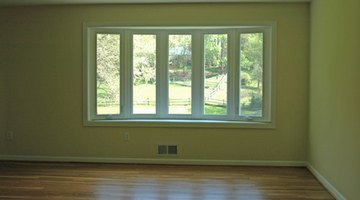
Bright yellows don't usually work well with dark wood, as they tend to have an overly flamboyant visual impact. In addition, other yellows often clash with dark wood as well. Dusty yellows, however, especially those with grey or brown undertones can mesh well with dark woods. Reserve these dark yellows for use with extremely dark woods. A flat, buff ochre can look terrific when combined with black-stained walnut.
- Bright yellows don't usually work well with dark wood, as they tend to have an overly flamboyant visual impact.
- Dusty yellows, however, especially those with grey or brown undertones can mesh well with dark woods.
Dark reds
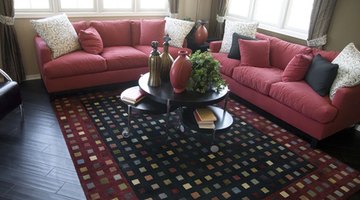
Dark reds can give wood-trimmed rooms a Victorian feel. Use wine reds with walnut, maple, ebony and mahogany to produce rich effects. Cranberry or blood red tones can match slightly lighter wood hues. Beware of choosing deep reds that match too closely with any reddish tones present in your wood, as this will make your woodwork fade blandly into the background.
- Dark reds can give wood-trimmed rooms a Victorian feel.
Greens

Cool greens balance cherry wood, while also harmonising with bluer-toned woods. A mint green makes the most of shining ebony trim, while grey-inflected sages look breezy against walnut trim. Warm basil tones look masculine and strong against mahogany moulding.
Blues
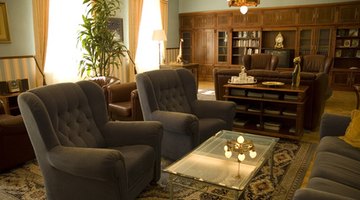
Blue paint colours offer the most flexible range of choices for complementing dark wood hues. While blue paint might not work well for kitchens, it creates a tranquil background for almost any other room, from bedrooms to bathrooms. A navy hue looks stunning with old walnut, while peacock blues make a classic complement for mahoganies. Very pale, flat blues look appealing in combination with cherry.
- Blue paint colours offer the most flexible range of choices for complementing dark wood hues.
- A navy hue looks stunning with old walnut, while peacock blues make a classic complement for mahoganies.
Purples
While purple has long had a reputation for difficulty, many designers have recently found that it can make for unusually chic interiors. Warm-toned woods will be best served by dark plums or luscious eggplants, while silvery purples and pale lavenders make cooler-toned woods pop. Use a milky, misty purple with unvarnished oak trim, and blackish purple with mahogany. Dull wine purples work well with ebony, while lapis lazulis match better with cherry.
- While purple has long had a reputation for difficulty, many designers have recently found that it can make for unusually chic interiors.
- Dull wine purples work well with ebony, while lapis lazulis match better with cherry.
